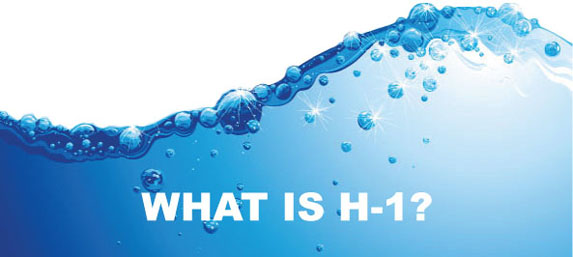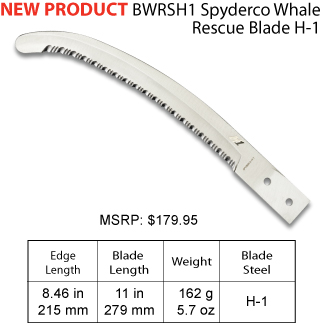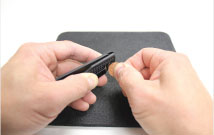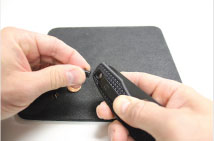|
AFI: Aficionado (someone who is into knives)
ABS: A common amorphous thermoplastic polymer with high impact strength. Used in many industries, Spyderco uses it for the base of the 204 Tri-Angle Sharpmaker.
C.Q.I.: Constant Quality Improvement—a process Spyderco applies to product design and manufacture in which changes and refinements are continually made to existing models, improving ergonomics, materials or manufacturing techniques.
DLC: DLC (Diamond-like carbon) is a mixture of sp2 (graphite) & sp3 (diamond) used to coat blades and parts to make them non-reflective.
EDC: An acronym for “everyday carry,” indicating a knife that is carried and used daily.
ELU: An acronym for “end-line user,” the consumer who uses Spyderco knives and sharpeners.
EMT: Acronym for Emergency Medical Technician.
FB: Fixed Blade
FRCP: (Fiberglass Reinforced Co-Polymer) A tough, chemical and heat-resistant material that is extremely lightweight and versatile. An injection-molded co-polyester reinforced with glass fiber, it is unique in that it can be made translucent or transparent and tinted with various colors.
FRN: (Fiberglass Reinforced Nylon) A nylon polymer mixed with glass fiber that can be injection molded. Lightweight and extremely strong, it is used in the manufacture of formed, textured knife handles.
LEO: Acronym for Law Enforcement Officer.
L/R: Left/Right knife clip that is manufactured to affix to either side the knife positioning the folder for use by left- and right-handed people.
MIM: An acronym for Metal Injection Molding—a process in which a powdered metal is mixed with a binder and injected into a mold to create a detailed molded part.
MOLLE: An acronym for Modular Lightweight Load-carrying Equipment - the current system of load-bearing equipment used by military and law enforcement personnel. It consists of a grid of nylon webbing that allows the modular ttachment of pouches and other equipment to achieve customized mission-specific configurations.
NKP: Non-Knife Person
P: PlainEdge Blade
PS: Combination Edge Blade (plain/serrated)
R.I.L.: An acronym for Reeve Integral Lock - a folding knife lock mechanism developed by Chris Reeve that uses a split metal handle scale as the foundation of the lock bar. Its operation is similar to the Michael Walker LinerLock.
S: SpyderEdge Blade (serrated)
SFO: Spyderco Factory Outlet
UKPK: United Kingdom Pen Knife
|










